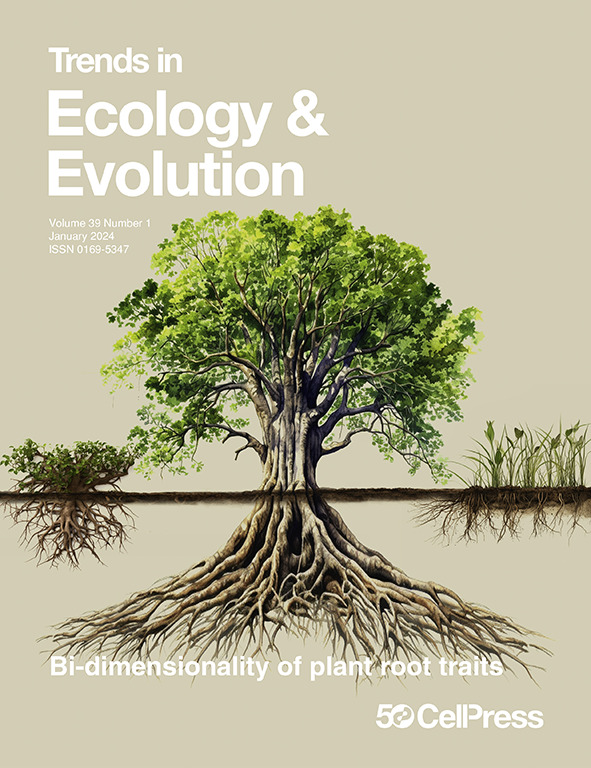将气候变化下个体动物行为与物种范围变化联系起来。
IF 16.7
1区 生物学
Q1 ECOLOGY
引用次数: 0
摘要
气候变化导致动物物种将它们的活动范围转移到更高的海拔、纬度和深度,以追踪它们喜欢的非生物生态位。然而,在这些转移中有广泛的变化,有些物种根本没有转移它们的范围。其中一些变化的产生是因为物种的分布不仅与非生物环境一致,而且还受到生物因素和运动的影响。通过促进对气候介导的非生物、生物和运动因素变化的快速适应反应,行为可塑性使种群能够在环境变化中生存并持续存在,同时也使它们能够在空间迁移时成功建立新的栖息地。本文章由计算机程序翻译,如有差异,请以英文原文为准。
Linking individual animal behavior to species range shifts under climate change.
Climate change has led animal species to shift their ranges to greater elevations, latitudes, and depths, tracking their preferred abiotic niche. However, there is extensive variation in these shifts, and some species have not shifted their ranges at all. Some of this variation arises because species' distributions not only align with the abiotic environment but are also shaped by biotic factors and movement. Through facilitating rapid adaptive responses to climate-mediated changes to abiotic, biotic, and movement factors, behavioral plasticity allows populations to survive environmental change to persist in place, while also enabling successful establishment in novel habitats when shifting in space.
求助全文
通过发布文献求助,成功后即可免费获取论文全文。
去求助
来源期刊

Trends in ecology & evolution
生物-进化生物学
CiteScore
26.50
自引率
3.00%
发文量
178
审稿时长
6-12 weeks
期刊介绍:
Trends in Ecology & Evolution (TREE) is a comprehensive journal featuring polished, concise, and readable reviews, opinions, and letters in all areas of ecology and evolutionary science. Catering to researchers, lecturers, teachers, field workers, and students, it serves as a valuable source of information. The journal keeps scientists informed about new developments and ideas across the spectrum of ecology and evolutionary biology, spanning from pure to applied and molecular to global perspectives. In the face of global environmental change, Trends in Ecology & Evolution plays a crucial role in covering all significant issues concerning organisms and their environments, making it a major forum for life scientists.
 求助内容:
求助内容: 应助结果提醒方式:
应助结果提醒方式:


